IN FONTENAY-LE-COMTE
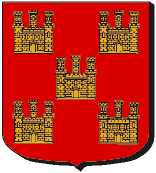
![]()
IN FONTENAY-LE-COMTE

![]()
Where did Pierre Micheau (known as Michel) come from? He was a Poitevan and originated from Fontenay-le-Comte in Poitou, diocese of Maillezais. Recent research done in France proved futile in discovering his baptismal record. Between the years 1634 and 1639, the baptisms registers disappeared, and the year 1637 has remained undocumented. It is supposed that he was baptized in the church of Notre-Dame, located in the rue Pont-aux-Chèvres. His parents were Antoine Michel and Marie Train. Antoine Michel (Micheau) was tradesman, one says him draper, during the burial of his wife; one did not find the place of his birth nor yet the record of his death. As for Marie Train, she was baptized in the church of Notre-Dame-de-Fontenay on August 27, 1602. She was the daughter of Pierre du Train and Marie Michelle. On May 26, 1662, Marie Train was buried in the cemetary of her parish; she was 61 years of age. The marriage of Antoine Micheau and Marie Train would go up towards 1624 because a child, Estienne, was buried on February first, 1634, at the age of 9. On October 16, 1635, was buried Thomas, 7 months old. Lastly, on April 2, 1640, appears in the registers the baptism of Marie Micheau, daughter of Antoine and Marie Train.
At the age of eighteen, Pierre is serving his apprenticeship with Jacques Audouit, a hatter, since june 24, 1655. On July 15, accompanied by his father Antoine, Pierre promises "maître" Audouit to be docile and obedient, and not leave his house or his shop without his permission. Conversely, Jacques Audouit hires Pierre Micheau as an apprentice, takes him in his house where he will live for one year and a half.
The ancestor of the Michaud family, for the most
part of his life, carried the family name Michel, then Micheau. It
is only on his last years that one gave him the name Michaud
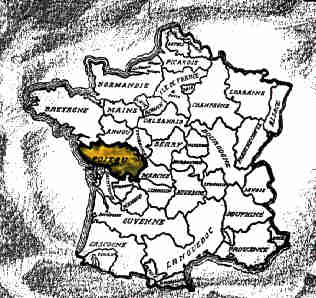
Poitou, early France province
The province of Poitou appeared among the 33 governments
wich suddivised France of Ancien Regime. In extent, today it includes
the departments of Deux-Sèvres, Vendée and Vienne.
It was geographically a zone of transition between north and south of France.
The agricultural vocation of Poitou will last until twentieth century.
Throughout its history, Poitou was the center of considerable human movements
and a zone of transition and from where are originating 815 pioneers of
Canada. One distinguished the Haut-Poitou at east and the Bas-Poitou
at west. Fontenay-le-Comte was the capital of Bas-Poitou. Fontenay
is today a nice city with a glorious past, hearth of the Renaissance in
Poitou with fortifications wich made build, in XI century, by dukes of
Aquitaine count of Poitiers. The prosperity of the city came from
its factories of swords ans its faience manufactures. It exported
its products in the Netherlands, in Flandres and as far as in Italy.
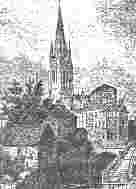
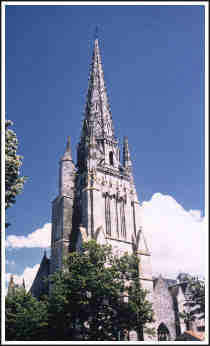
The church of Notre-Dame before its restoration and today
Decimated by eight sieges during the wars of religion,
dismantled in 1621 by Louis XIII, Fontenay saw its industry ruined by the
Revocation of the Édict of Nantes in 1685. It should not be
astonished that Pierre Micheau decided to leave his birthplace during these
hard years. In eighteenth century, in consequence of a massive emigration
of tradesmen, craftsmen and manufacturers, Fontenay will see its national
standing being reduced. A sudden industrial growth, in the years
1960, based on unexploited potentials until then, brought a true bursting
of the city out of its walls.

Fontenay-le-Comte region
Today, third city of Vendée
with about 17 000 inhabitants, Fontenay-le-Comte
continue its development . Supported by its administrative structures
and the means with which was equipped the South-Vendée, Fontenay-le-Comte
appears to be the economic center of an area which subsisted retired within
itself for a long time.
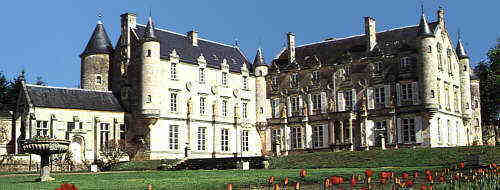
In the center of the city, the Terre Neuve castle builded in 1580
![]()